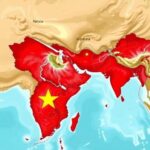Politics
ASEAN, ASIA, ASSAM, AUSTRALIA, BHUTAN, BISWAS BARAL, CHINA, CUBA, DEVELOPMENT, ECONOMIC DEVELOPMENT, ECONOMIC GROWTH, GELEPHU, GELEPHU MINDFULNESS CITY, INDIA, INDIAN, INFRASTRUCTURE, INFRASTRUCTURE DEVELOPMENT, JI, MEXICO, NEPAL, NEW DELHI, NORTH AMERICA, OCEANIA, SINGAPORE, SOUTH ASIA, SPECIAL ADMINISTRATIVE REGION, THIMPU
Clara Montgomery
Navigating the Geopolitical Challenges of Bhutan’s Gelephu Mindfulness City
The Gelephu Mindfulness City in Bhutan represents an ambitious project combining economic growth with sustainability. Despite aspirations for development, the project faces significant geopolitical and financial challenges due to Bhutan’s close alignment with India and potential barriers to foreign investment. Concerns over land prices and the demographic impact further complicate the initiative’s viability. Overall, calls for cautious optimism amid uncertainties highlight the importance of regional collaboration for the project’s success.
The Gelephu Mindfulness City (GMC) project, envisioned as a Special Administrative Region in Bhutan, aims to integrate economic growth with principles of sustainability and holistic living. Strategically located in south-central Bhutan, it seeks to become a global leader in mindful urban development, covering an area of 2,500 square kilometers near the Indian state of Assam. However, the realization of this ambitious project raises significant questions regarding its feasibility amid existing geopolitical dynamics.
Bhutan’s close ties to India, necessary for the success of the GMC, highlight the complexities of its geopolitical environment. Historically, Bhutan has aligned itself with New Delhi, and this reliance poses challenges for the independent functioning of the GMC. With its aspirations for sustainable urban growth, the project might nonetheless struggle to escape the geopolitical constraints imposed by its strategic location in the region.
Many Bhutanese view the GMC as a gift from their king, who is perceived to be focused on their welfare amidst concerns over the political class. It is particularly aimed at inspiring youth, many of whom aspire to migrate abroad for better opportunities. The king’s supportive outreach to the diaspora during the project’s announcement is both an acknowledgment of their significance and an attempt to motivate them toward contributing to national development.
Nonetheless, the high land prices and the critical need for foreign investment—particularly from India—raise substantial concerns. The apprehensions surrounding foreign settlement may disproportionately affect the GMC’s development and definitional scope, questioning whether the resulting demographics would reflect Bhutanese aspirations or merely the influx of Indian tech professionals.
The financial framework underpinning the GMC, supported by increased electricity sales to India and long-term bond issuance, also faces scrutiny. The prospects of attracting investment beyond India’s influence, particularly from China, remain dim due to Bhutan’s entrenched diplomatic dependencies. Given the contentious historical backdrop between India and China over Bhutanese territory, the project’s strategic and economic viability remains uncertain.
Despite an array of concerns, there exists a sliver of optimism regarding the potential for the GMC to catalyze positive change in the region. Comparisons to the initial failures of Ordos underscore the need for patience and strategic planning. A successful GMC could signal a shift in South Asia’s geopolitical landscape, fostering greater cooperation, thereby dispelling colonial mentality and opening pathways toward a more collaborative future.
The Gelephu Mindfulness City, while an ambitious undertaking for Bhutan, faces substantial geopolitical and financial challenges. Its success is contingent not only upon effective local and international cooperation but also on safeguarding Bhutan’s autonomy amidst regional dynamics. The potential for the GMC to become a beacon of sustainable urban development remains, despite the risks involved and the necessity for cautious optimism. The lessons learned from similar projects offer valuable insight into navigating these complex realities.
Original Source: kathmandupost.com








Post Comment